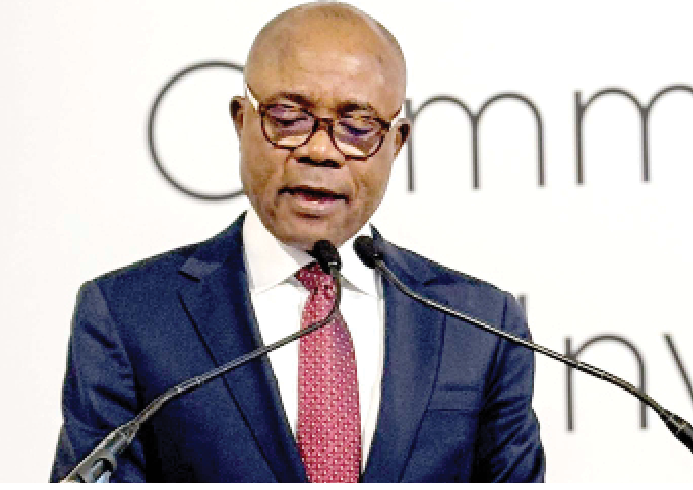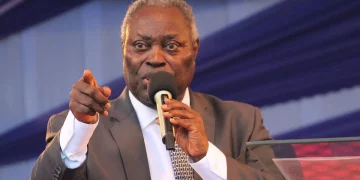The discussions in this session have been quite enriching. Our profound thanks to the speakers and the panelists for their incisive analysis.
These analyses have lent insightful perspectives to the discourse regarding how Africa can leverage the potential in its 1.3 billion population to boost trade and investment. Such a large population, plus Africa’s combined GDP of $3.4 trillion and the fact that the continent has 65 per cent of the world’s uncultivated arable land, means that Africa should actually be building the table – and not waiting to be invited to the table.
But one of the challenges lies in translating Africa’s remarkable potential into real economic development that benefits the continent’s people. The big question has always been how that can be achieved. One of the solutions lies in fully exploiting the power of trade, particularly intra-Africa trade. It would seem this was what the African Continental Free Trade Area, AfCFTA came to fill. Indeed, the need for integration and trade facilitation has never been more compelling than now, given all the existential crises we are experiencing.
The World Bank estimates that AfCFTA could lift 30 million people out of extreme poverty, raise incomes for 68 million people, and boost Africa’s income by $450 billion by 2035. That is about 10 years from now. But another big question is the extent to which AfCFTA’s key objectives, such as removal of tariffs and non-tariff barriers have been actualised. The answer leaves much to be desired. Rhetoric has not been matched with necessary action. The result is that the economic benefits that African economies would have reached from improved inter-trade remains a dream defied.
How can it be explained that despite its vast arable land, Africa still spends $40bn on food imports, annually? Now, imagine what difference such a substantial sum could have had on African economies if they were generated by intra-continental trade.
The dream of a continent-wide common market remains as yet elusive. Despite our frameworks, deep-rooted structural barriers still exist: Only 14.4% of Africa’s trade is intra-African, compared to 69% in Europe and 59% in Asia. Just 7% of Africa’s trade moves by air, yet we still face the highest intra-continental flight costs in the world. Over 70% of goods are transported by road — but poor road infrastructure and border bottlenecks cost us over $4 billion annually in lost trade.
Furthermore, maritime transport is underutilised. Only one in ten African countries has a major port efficiently connected to inland markets. Only 1 in 10 African countries has a major port efficiently connected to inland markets. Rail systems – our most cost-effective bulk trade option — remain disconnected or outdated across most of the continent. These statistics are dismal, especially given that it is nearly a decade since the signing of the AfCFTA.
But it is not all doom and gloom. Europe’s long walk to the European Union offers some inspiration, given the many barriers it faced. It took the European Union over 35 years — from the Treaty of Rome in 1957 to the launch of the Single Market in 1993 — to fully realise a space where goods, services, capital, and people could move freely. They did not just talk integration — they backed it with laws, infrastructure, and political commitment. The Schengen Agreement, which came later, made it possible to travel across most European countries without a passport. The EU’s common legal and regulatory framework ensures that a product approved in one country can move freely across all others — without new checks or taxes. It was not instant — but it was intentional.
Africa can learn from this. We do not need to reinvent the wheel — we just need to align ours. If Europe could do it with dozens of languages, diverse economies, and a history of divisions, then AfCFTA as its compass, Africa has every reason to succeed.
However, we cannot talk about building a common market when we are not yet connected — physically or digitally. So, the question is not what is wrong, but what must be done. First, consolidation is key. We need more than political will. We need a unified legal and regulatory framework — one that harmonises trade rules, streamlines procedures, and builds confidence for businesses across borders.
Second, investment in the enablers is critical. The growth engines of African trade are not abstract: they are transport corridors, smart ports, cross-border rail, digital payments, efficient customs, and unified standards.
Africa’s youthful population may be a unique demographic advantage in a world where many other continents contend with aging populations. But it could still prove to be a social tinderbox if not carefully harnessed. Nurturing Africa’s human capital should be seen as an imperative because it is every nation’s true wealth. No nation ever rises above the sheer capacity of its human capital. So, it goes without saying that growing our human capital will necessarily entail fixing our education system. Only when we sufficiently train our youths can they be truly considered as the future of world labour. This is a development imperative.
That brings me to a challenge and a call to action. AfCFTA is not a feel-good creation. Neither should it be subsumed by a regional block. It is for all of us. Let us not allow regionalism to become a barrier to pan-African growth. Let us unite our markets, our ports, our rails, and our ambitions.
To global partners: Africa is a force — in fintech, agriculture, logistics, green energy, and more. While much of the world is aging, Africa is getting younger. By 2030, over 40% of the world’s youth will be African. That is not just statistics — that is a competitive advantage.
So, the message deductible from the discussions this afternoon is that Africa’s economic renaissance lies in extensive trade – not aid or charity.
Africa is ready. Let us turn frameworks into highways; Let us turn policies into power; Let us turn potential into performance. The time is now. And the opportunity is massive. And Africa is moving.
Thank you.





